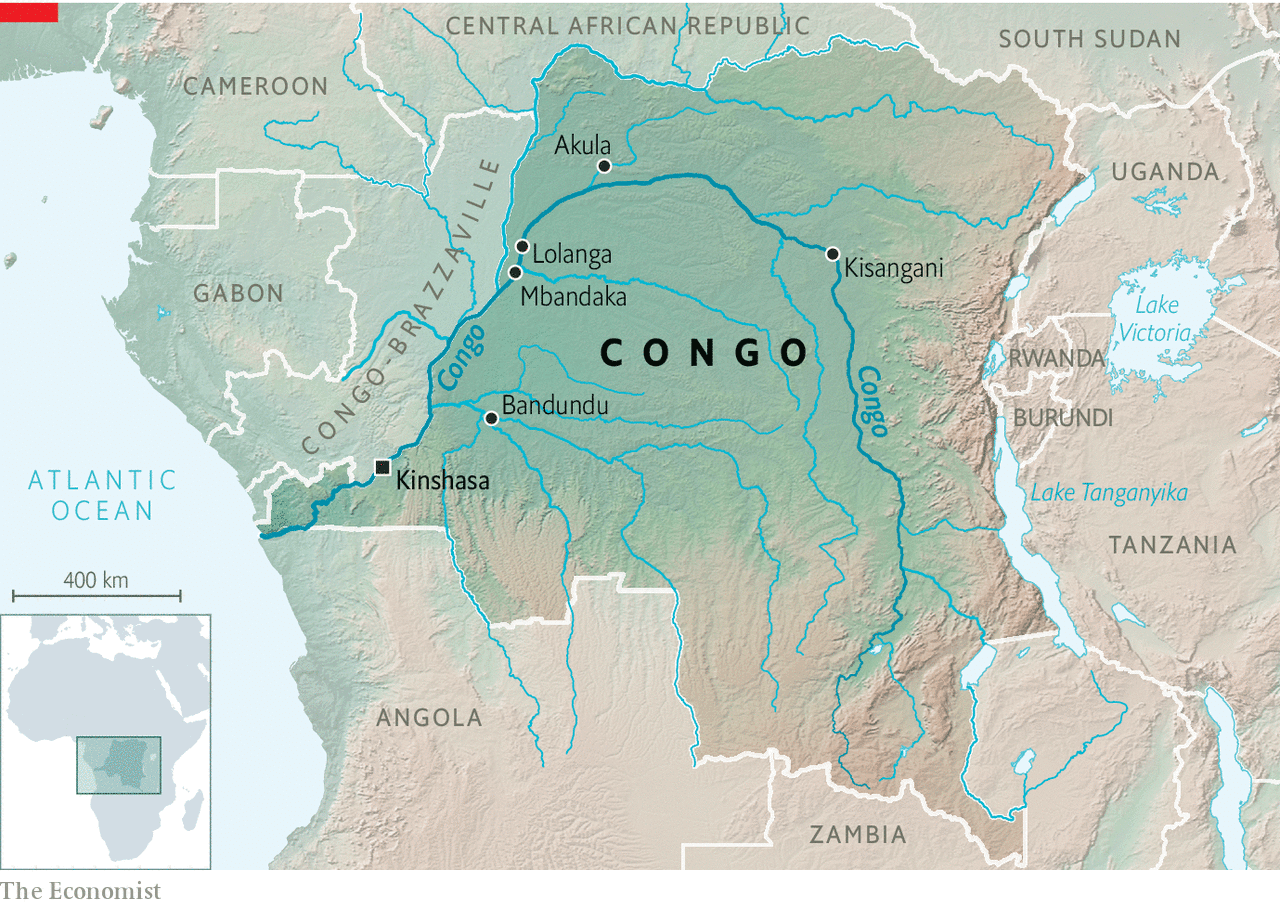The borders that divide African countries are often confusing and create more issues than they solve. These borders were crafted by European colonialists who carved up the continent with little regard for the history and culture of those who inhabit the land. This was the case in Central Africa at the Congo River basin, which saw one territory became two countries, the Democratic Republic of Congo (aka Congo-Kinshasa) and the Republic of Congo (aka Congo-Brazzaville).
The name, Congo, stems from the Bakongo kingdom, a Bantu tribe that populate the area. The Bakongo kingdom were one of the first kingdoms to have contact with Europeans. The kingdom had friendly relations with Portuguese explorers. The Portuguese brought goods and Roman Catholicism with them and the Bakongo supplied them with slaves who were captives of local wars. The relationship between the two was amicable until Portugal created the colony, Angola, and went to war against the Bakongo in a bid to expand. The Portuguese gave up on the fight due to the unfavourable climate and cost hence claiming Cabinda which is a province in present-day Angola.
In the 1880’s, the European explorers returned. The explorer, Henry Murton Stanley, ventured into the interior of the continent and returned to tell the Western world about it. Stanley helped King Leopold II, the king of Belgium, take control of the entire Congo basin. Stanley also mapped out the region, built roads and established treaties with local chiefs and native leaders who, unknowingly, gave up control of their land in exchange for brides. Leopold II brought in his military to make sure the treaties were honoured.
At the Berlin Conference of 1884, King Leopold II claimed the territory as his own and named it the Congo Free State. The territory was the King’s personal property from which he extracted and sold resources like rubber and ivory. More than 5 million Congolese people died during his reign while many more were forced into labour and punished using amputations and lashings. These atrocities were eventually exposed, and Leopold was forced to cede the country to the Belgian government.
In 1908, around the same time as Leopold’s cession, the area across the Congo River was also taken over by the French. It was called the French Congo initially and then it became the Middle Congo. Like the Belgian Congo, it was colonized exclusively for its resources and routes to the coasts. The French Congo was also a stomach-turning display of human cruelty and greed. Many people were forced into arduous labour which resulted in the death of nearly half of the indigenous population.
In the 1960’s, a range of independence movements swept the continent. These movements were particularly strong in the Congo basin and called for the end of European colonial rule. Under the guidance of the great Marxist revolutionary, Patrice Lumumba, the Congo Free State gained independence and became known as Zaire. The name was later officially changed to the Democratic Republic of Congo. Through the efforts of Jacques Opangault and Fulbert Youlou, Middle Congo gained independence and became the Republic of Congo.
Today, both these similar albeit different countries suffer immensely from the instability brought by their colonial pasts and the continued intervention of Western countries who benefit greatly from the anarchy that plagues them. Both countries are characterized by civil war and dictatorships and are marred by violence, disease, and poverty.
Leave a Comment
Sign in or become a Africa Rebirth. Unearthing Africa’s Past. Empowering Its Future member to join the conversation.
Just enter your email below to get a log in link.


Related News
Where Does the Name ‘Africa’ Originate From?
Nov 20, 2022
The Irresistible West African Afrobeats Genre Taking Over Global Interest
Apr 18, 2022
Why is Central African Republic’s Name Boring and Descriptive?
Mar 29, 2022